What does self-care look like? Running a marathon? Drinking four beers instead of six?
Your boat is waking up for spring and asking the same question. But it’s gonna need a little help.
Home to an earlier Easter than usual, and a few days away from the spring equinox, let’s just say it loud: spring is here. Madisonville and Marina Del Ray boaters are ready to get out on the Tchefuncte, cruise down to the Gulf, or troll the river for white perch and spawning bass. From hull to fishfinder, it’s the right time to give your vessel a full inspection and implement the maintenance, upgrades, and safety checks before getting back on the water. Our Spring Boater Checklist below is the definitive reference to get your boat right as the spring season begins.
For a printable option, open the comprehensive boater checklist PDF here:
Boater Checklist
Preparing Your Boat for the Season
GENERAL
• Do a general cleaning of the hull, deck and topsides using a mild detergent
• Make sure drains and scuppers are clear
• Put on a good coat of wax
• Clean and polish metal with a good metal polish
• Clean teak and oil
• Clean windows and hatches
• Clean canvas, Bimini and dodger
• Clean interior including bilges
• Check spare parts and tools and replace as necessary
• Make sure registration is current and onboard
• Check and replace wiper blades if necessary
HULL
• Check for hull abrasions, scratches, gouges, etc., and make appropriate repairs
• Check and replace zinc anodes
• Check for blisters and refinish if necessary
• Check rub rails
• Check swim platform and/or ladder
• Inspect and test trim tabs
• Check shaft, cutlass bearing, strut, and prop
• Check rudder and fittings
• Touch up or replace antifouling paint
DECK, FITTINGS, & SAFETY EQUIPMENT
• Check stanchion, pulpits and lifelines for integrity
• Check ground tackle, lines, fenders, etc.
• Check chainplates and cleats
• Check hull/deck joint
• Check deck, windows, and port lights for leaks
• Inspect anchor windlass and lubricate
• Clean and grease winches
• Check and lubricate blocks, pad eyes, etc.
• Check dinghy and life raft
BELOW DECKS
• Check, test and lubricate seacocks
• Check condition of hoses and clamps
• Make sure below waterline hoses are double clamped
• Check bilge pumps for automatic and manual operation
• Check for oil in bilges
• Check limber holes and make sure they are clear of debris
• Lubricate stuffing boxes, shaft and rudder logs
ELECTRICAL SYSTEM AND COMPONENTS
• Check battery water level
• Check/recharge batteries
• Check terminals for corrosion, and clean and lubricate
• Check bonding system
• Inspect all wiring for wear and chafe
• Test all gauges for operability
• Check shore power and charger
• Check for spare fuses
• Check all lighting fixtures (including navigation lights) and make sure you have spare bulbs
• Check all electronics for proper operation
• Inspect antennas
REQUIRED AND RECOMMENDED EQUIPMENT
• Sound signaling device
• Check distress signals and expiration date
• Check PFDs
• Inspect life rings and cushions
• Check fire extinguishers and recharge if necessary
• Check and adjust compass
• Check navigation lights
• Check charts and replace as necessary
• Check radar reflector
• Check and replace first aid supplies
• Check bailer and hand pump
INBOARD ENGINE(S)
• Change oil & filters – have spare onboard
• Check and change fuel filters – have spares onboard
• Check and change engine zincs
• Check cooling system and change coolant as necessary – have extra onboard
• Record engine maintenance log, especially date and hours of last oil changes
• Check belts for tension
• Check transmission fluid
• Check and clean backfire flame arrestor
• Check impeller
• Check and clean water strainer
• Check bilge blower
HEAD SYSTEM
• Check for smooth operation – lubricate and clean as necessary
• If equipped with treatment system, have chemicals on hand
• Y-valve operation check, valve labeled & secured
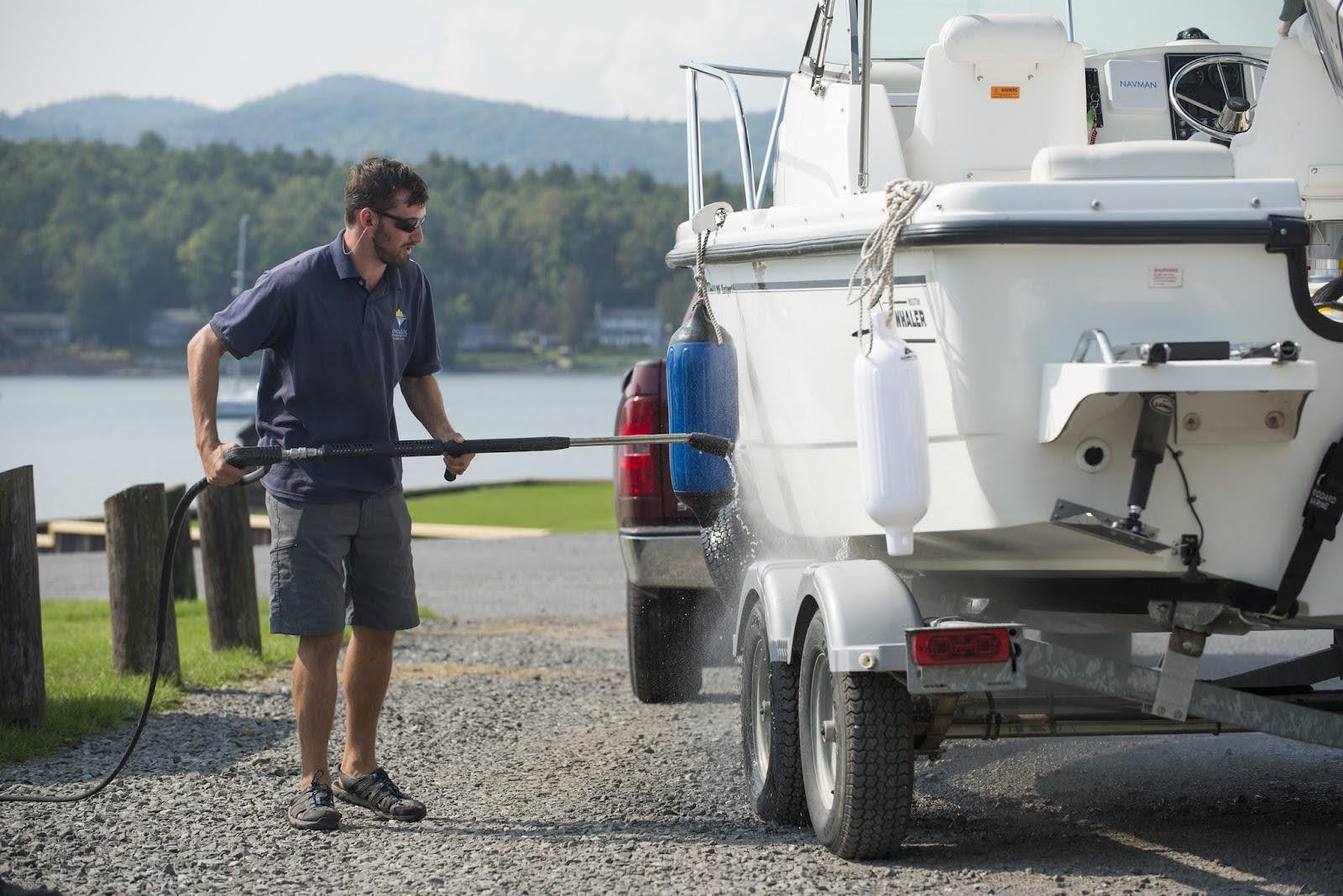
Getting that boat ready with a good powerwash
(Image: Adirondack Watershed Institute)
WATER SYSTEM
• Flush water tank
• Check water system and pump for leaks and proper operation
• Check that hot water tank is working on both AC and engines
• Check for tank cap keys on board
• Check and clean shower sump pump screens
• Empty water separator filters
• Shock the drinking water tank. Our suggestion is pool shock, not bleach. Pool shock breaks down in a few days and then can be flushed out.
GALLEY
• Fill propane tank, check electric and manual valves, and check storage box vent to make sure it is clear
• Check refrigerator, clean and freshen, and operate on AC and DC power
• Clean stove and check that all burners and the oven is working
• Check microwave, if fitted
OUTBOARD MOTOR
• Replace spark plugs
• Check plug wires for wear
• Check prop for nicks and bends
• Change/fill gear lube
• Inspect fuel lines, primer bulb and tank for leaks
• Lubricate and spray moveable parts
TRAILER
• Check for current registration
• Check rollers and pads
• Check and lubricate wheel bearings
• Clean and lubricate winch
• Lubricate tongue jack and wheel
• Test lights and electrical connections
• Check tire pressure and condition
• Check brakes (if equipped)
• Check safety chains
• Check tongue lock
SAILS
• Check general condition
• Look for wear and chafing
• Check battens and batten pockets
• Check all sail attachments
• Inspect bolt rope
MAST AND RIGGING
• Check mast and spreaders for corrosion or damage
• Inspect spreader boots and shrouds
• Inspect rivets and screw connections for corrosion
• Check reefing points and reefing gear
• Clean sail track
• Check rigging, turnbuckles and clevis pins for wear and corrosion
• Inspect stays for fraying and “fish hooks”
• Check forestay and backstay connections
• Check masthead fitting and pulleys
• Check and lubricate roller furling
• Check halyards and consider replacing or swapping end for end
• Tape turnbuckles, cotter pins, and spreaders
The above checklist can be daunting – it’s time, it’s effort, it’s money. But properly taking care of your vessel, and heading down the river with a clean breeze and thrumming engine? That’s a feeling that’s hard to describe.

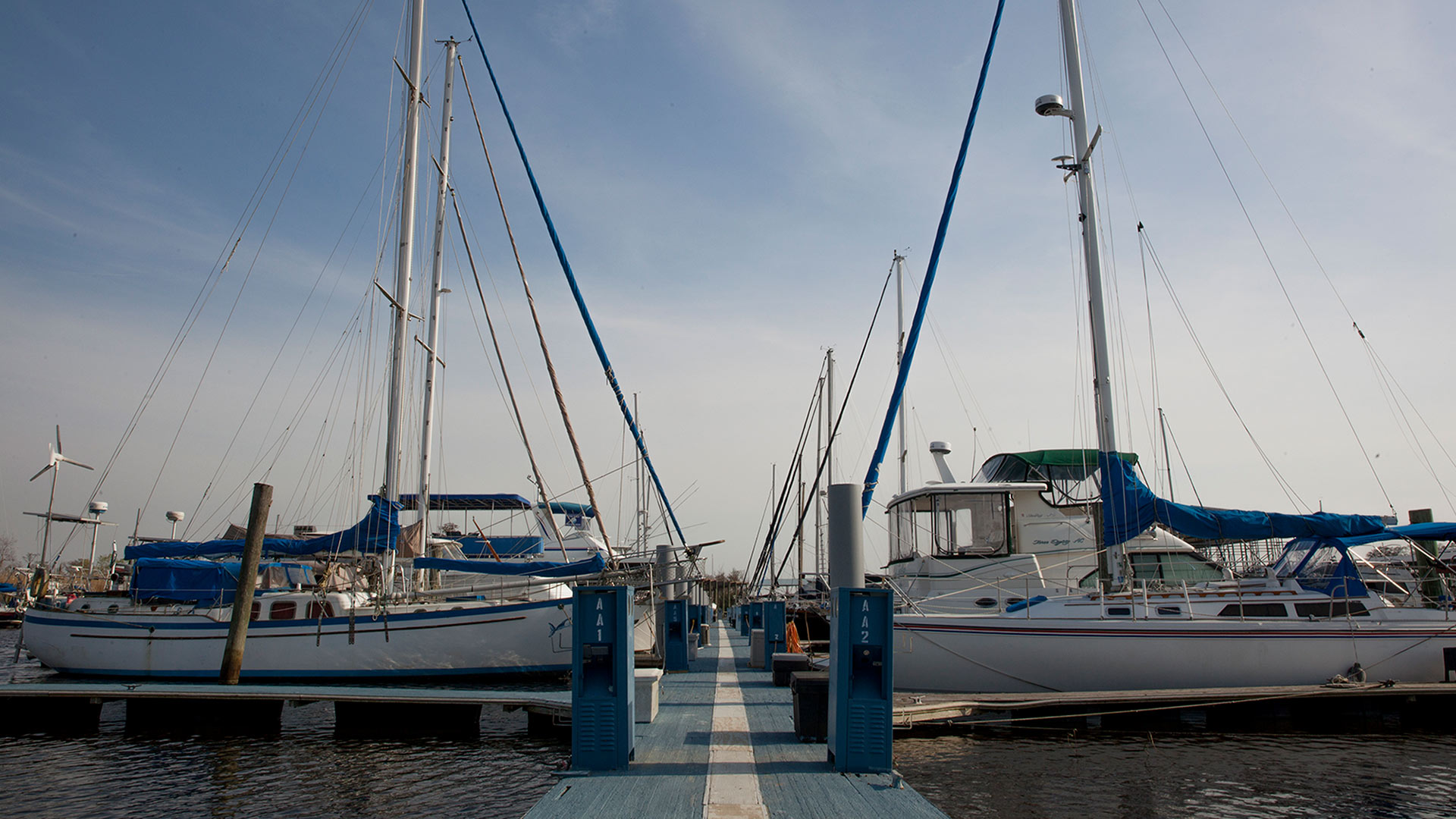
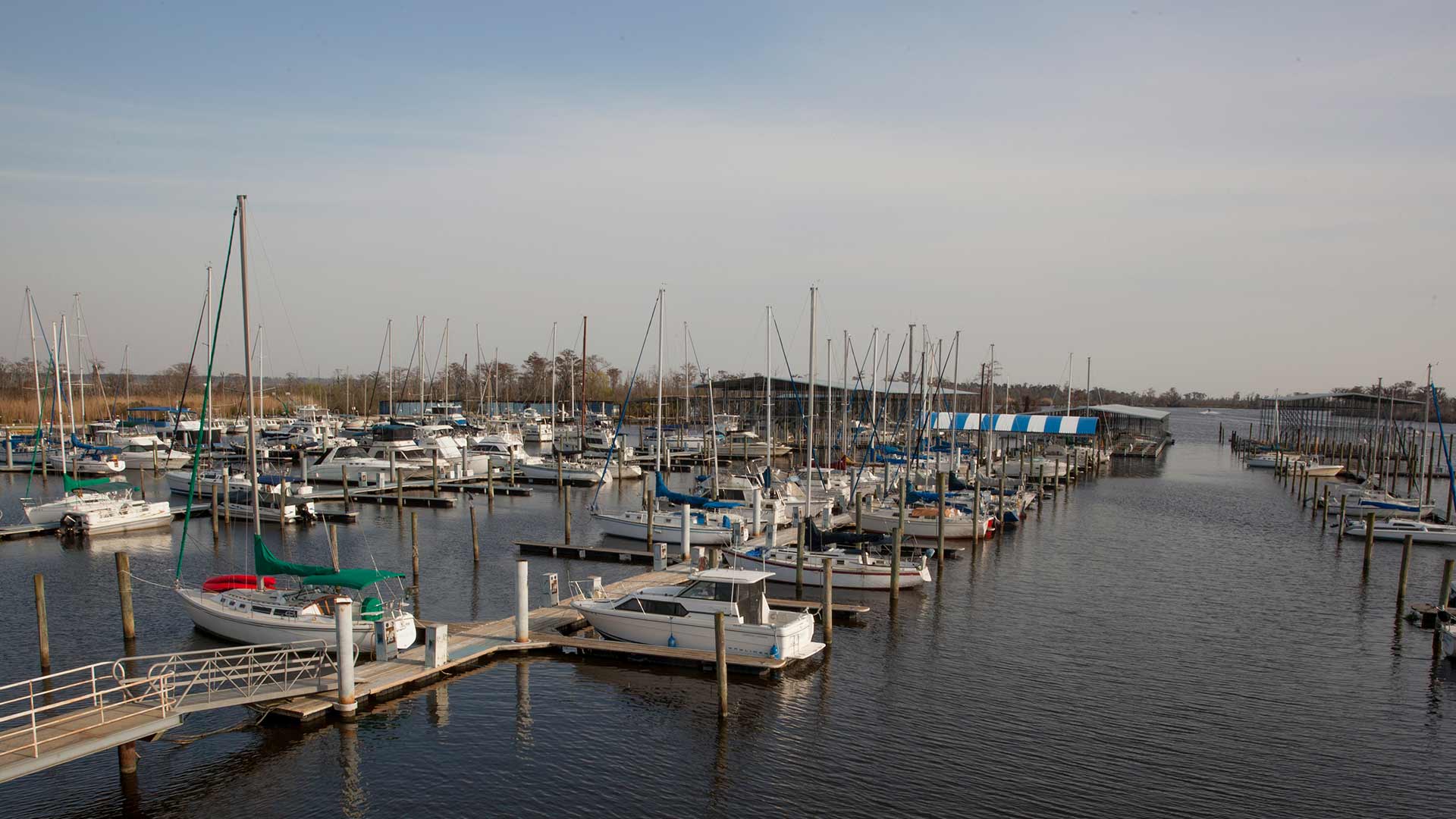
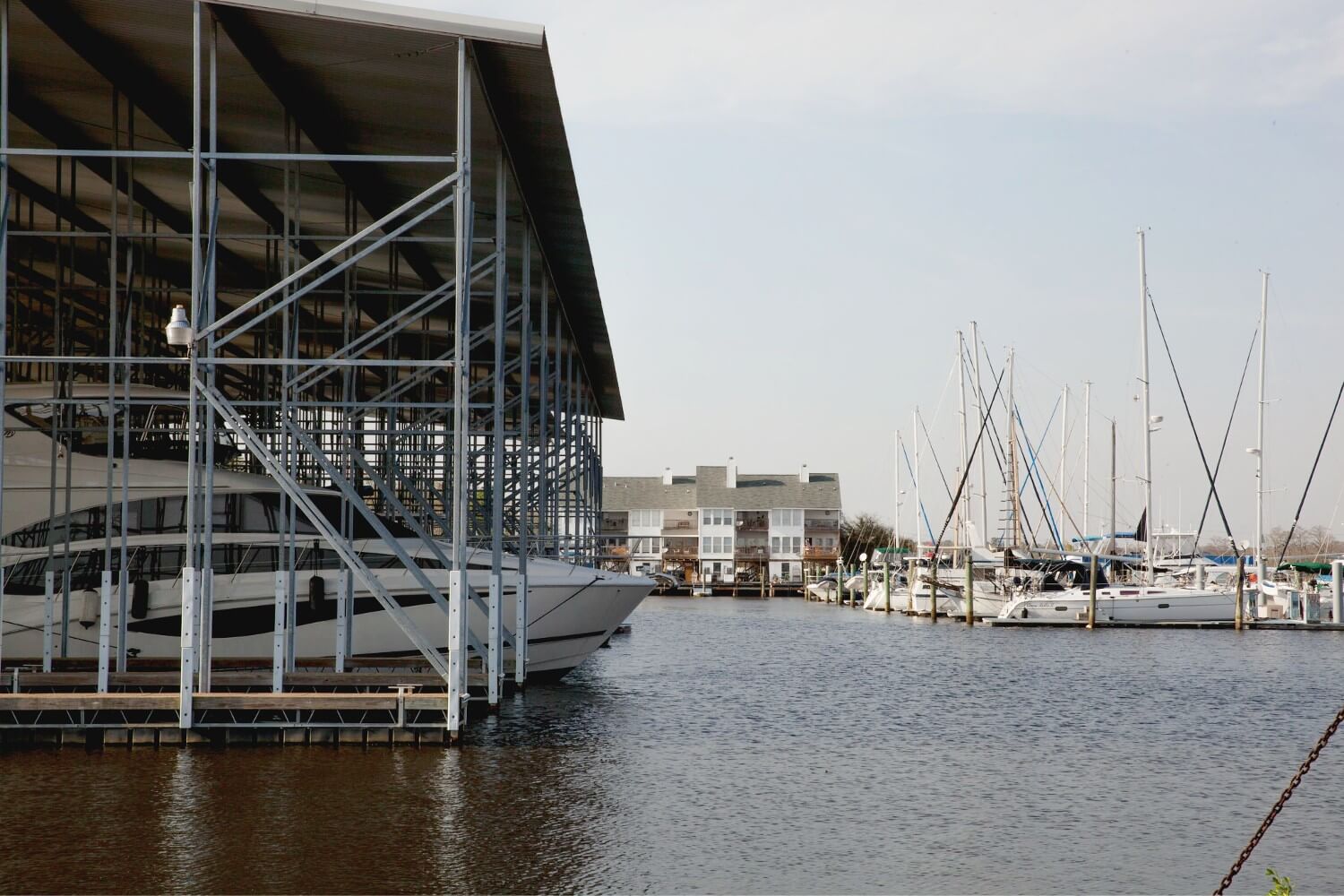

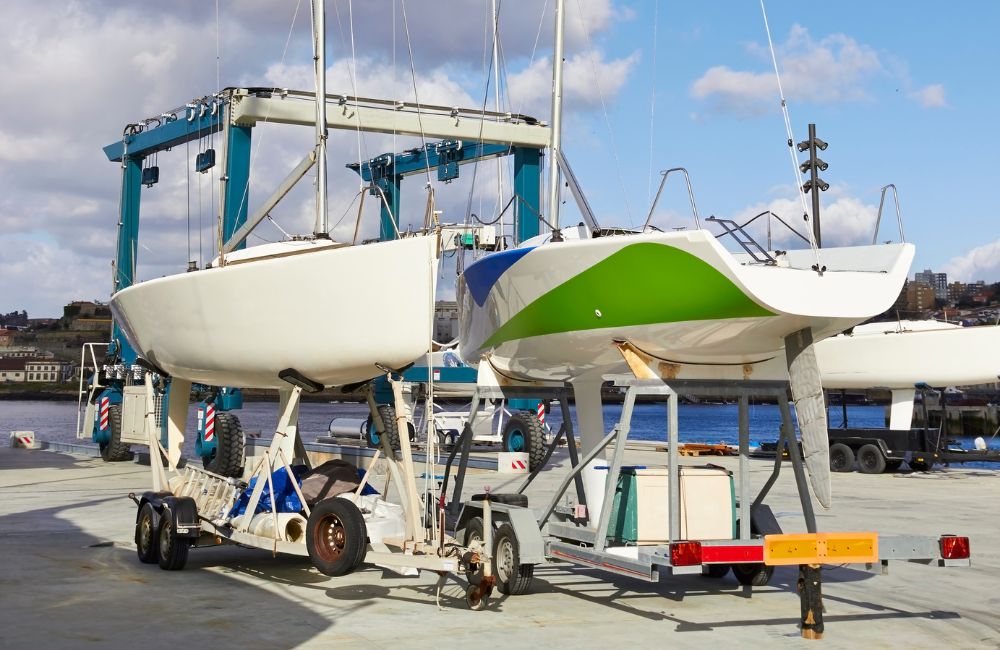
0 Comments